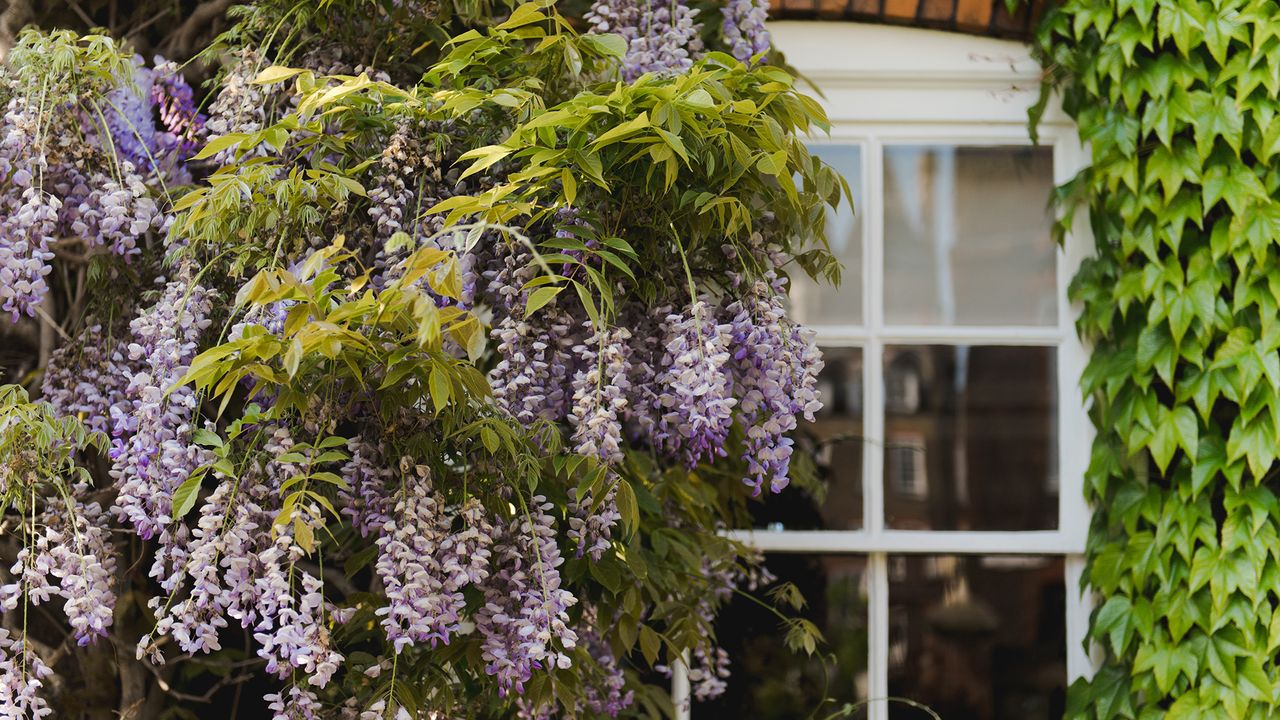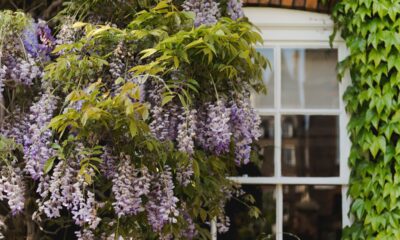Lifestyle
Avoid These 5 Plants That Can Damage Your Home

Adding plants and shrubs around your home can enhance its beauty and appeal. However, selecting the wrong species can lead to significant structural issues and costly repairs. Homeowners should be vigilant about the plants they choose to grow near their properties, as certain species can cause extensive damage over time.
In particular, five plants stand out as particularly problematic when planted near homes: English ivy, Trumpet vine, Wisteria, Arborvitae, and Bamboo. Understanding their growth patterns and potential risks is crucial for maintaining the integrity of your property.
English Ivy: An Invasive Climber
English ivy is known for its rapid growth and decorative appeal. However, it poses a threat to home structures. This invasive climber can infiltrate small cracks in walls, leading to moisture retention that promotes mold growth. Removing English ivy can also be challenging, as the vines adhere tightly to surfaces, causing additional damage during removal efforts.
Trumpet Vine: A Beautiful but Aggressive Plant
Another contender is the Trumpet vine. While its vibrant orange and scarlet blooms attract hummingbirds, it is categorized as an invasive weed by the U.S. Department of Agriculture (USDA). Without regular maintenance, this plant can grow aggressively, often sending out aerial roots that cling to walls. Its propensity for self-seeding can lead to unwanted growth in unintended areas.
Wisteria: A Stunning but Destructive Choice
Known for its breathtaking blooms, Wisteria can also wreak havoc on homes if not managed correctly. Certain non-native varieties, such as Chinese and Japanese wisteria, can grow as much as 60 feet in a single year, wrapping around structures and causing damage. Native varieties, while less aggressive, can still reach heights of 30 feet annually. Regular pruning is essential to keep this vine in check and prevent structural issues.
Arborvitae: The Fast-Growing Privacy Screen
Often selected for privacy hedges, Arborvitae offers dense greenery but also presents challenges. The Green Giant variety can grow up to three feet annually and reach a mature height of 50 to 60 feet. While its shallow roots are unlikely to damage foundations, unchecked growth can lead to branches encroaching on structures, necessitating frequent pruning.
Bamboo: Beauty or a Burden?
Bamboo can create a unique aesthetic around a home, but it needs careful management. Certain types, particularly running bamboo, can spread rapidly, growing up to 35 inches in a single day, according to Guinness World Records. This species can cause significant damage to foundations and plumbing as its rhizomes spread. In contrast, clumping bamboo grows vertically and is less invasive, making it a safer option for home landscapes.
Choosing the right plants for your garden is not merely a matter of aesthetics; it is essential to consider their potential long-term impacts on your property. By avoiding these five problematic plants, homeowners can ensure their landscaping enhances rather than hinders their home’s structural integrity.
-

 Technology5 months ago
Technology5 months agoDiscover the Top 10 Calorie Counting Apps of 2025
-

 Health2 months ago
Health2 months agoBella Hadid Shares Health Update After Treatment for Lyme Disease
-

 Health3 months ago
Health3 months agoErin Bates Shares Recovery Update Following Sepsis Complications
-

 Technology4 months ago
Technology4 months agoDiscover How to Reverse Image Search Using ChatGPT Effortlessly
-

 Technology1 month ago
Technology1 month agoDiscover 2025’s Top GPUs for Exceptional 4K Gaming Performance
-

 Technology2 months ago
Technology2 months agoElectric Moto Influencer Surronster Arrested in Tijuana
-

 Technology5 months ago
Technology5 months agoMeta Initiates $60B AI Data Center Expansion, Starting in Ohio
-

 Technology5 months ago
Technology5 months agoRecovering a Suspended TikTok Account: A Step-by-Step Guide
-

 Health4 months ago
Health4 months agoTested: Rab Firewall Mountain Jacket Survives Harsh Conditions
-

 Lifestyle5 months ago
Lifestyle5 months agoBelton Family Reunites After Daughter Survives Hill Country Floods
-

 Technology4 months ago
Technology4 months agoHarmonic Launches AI Chatbot App to Transform Mathematical Reasoning
-

 Technology3 months ago
Technology3 months agoUncovering the Top Five Most Challenging Motorcycles to Ride











